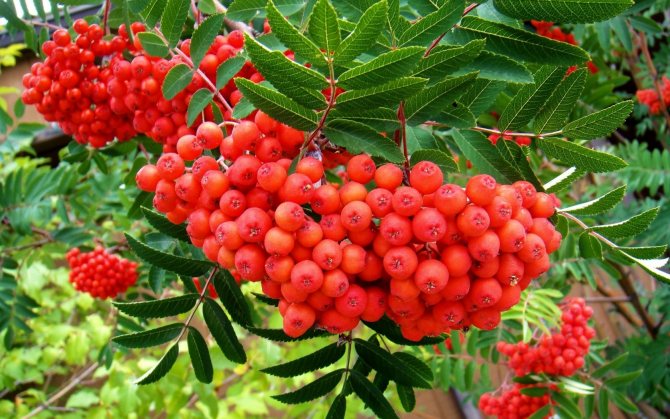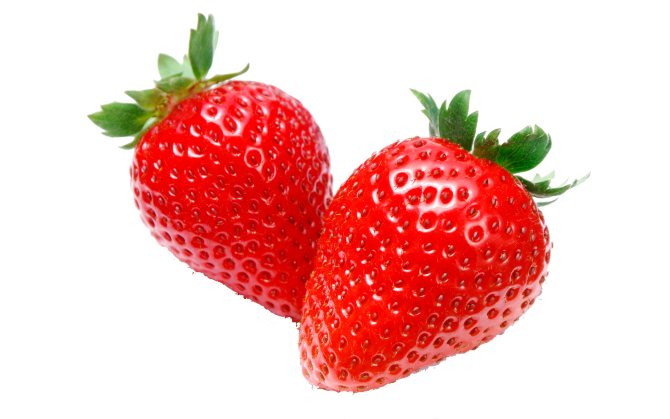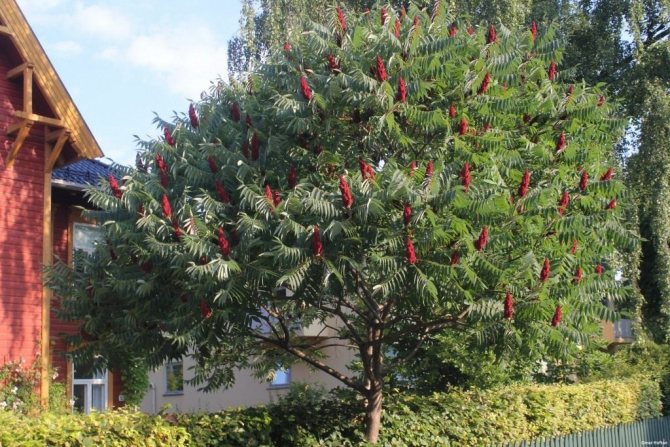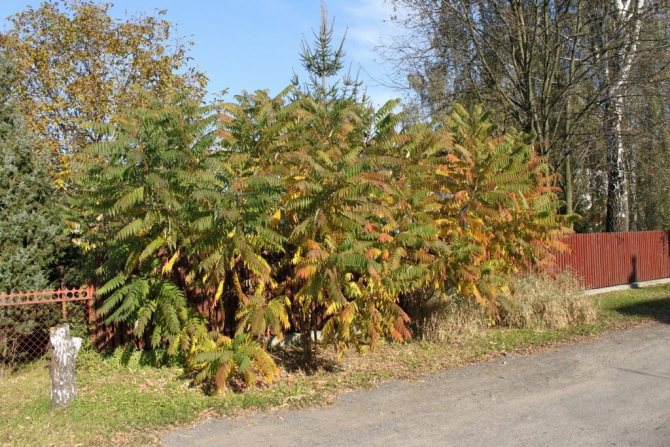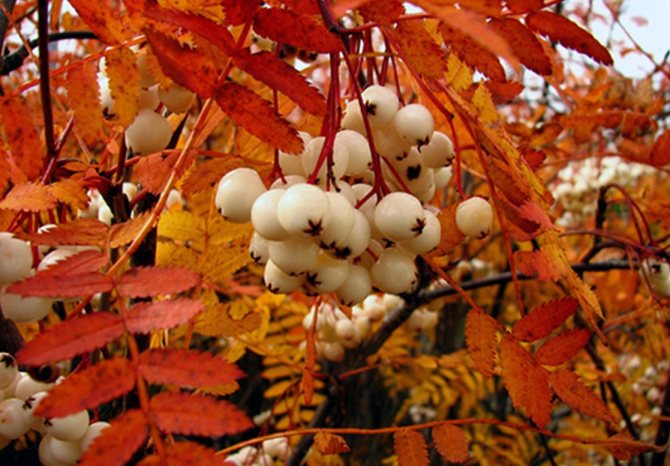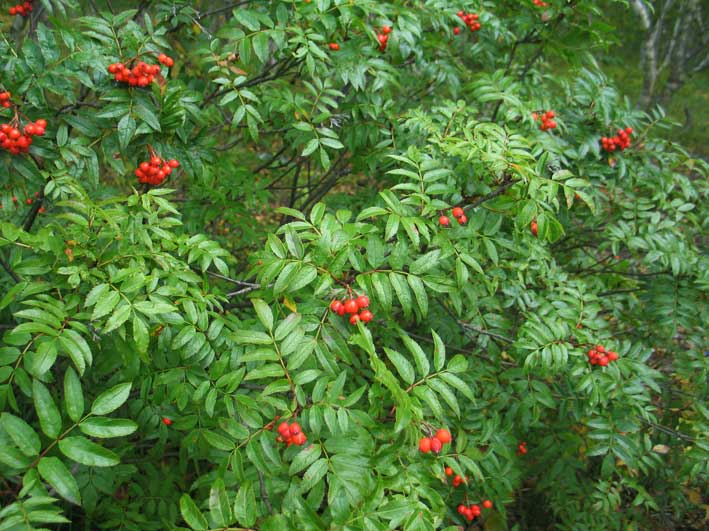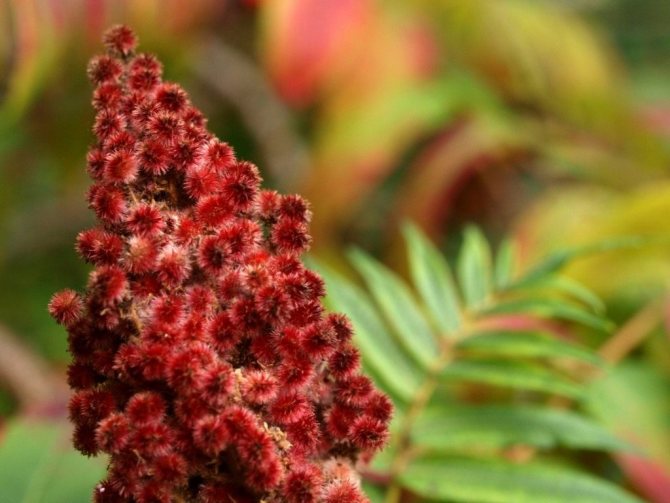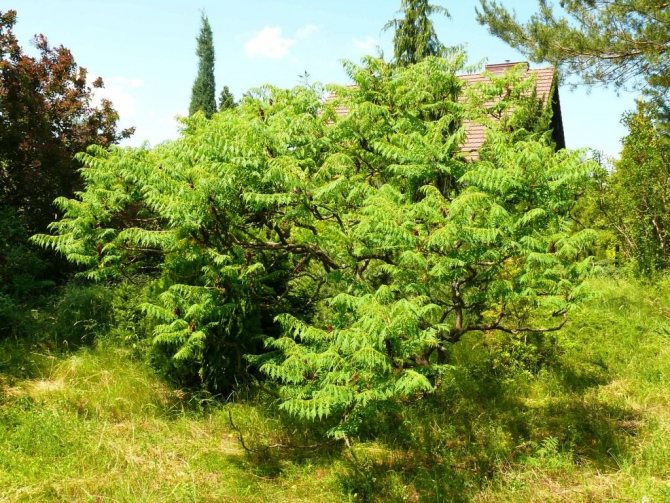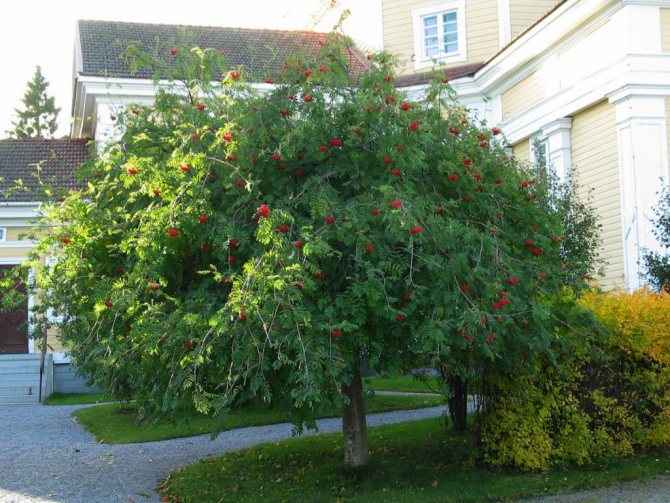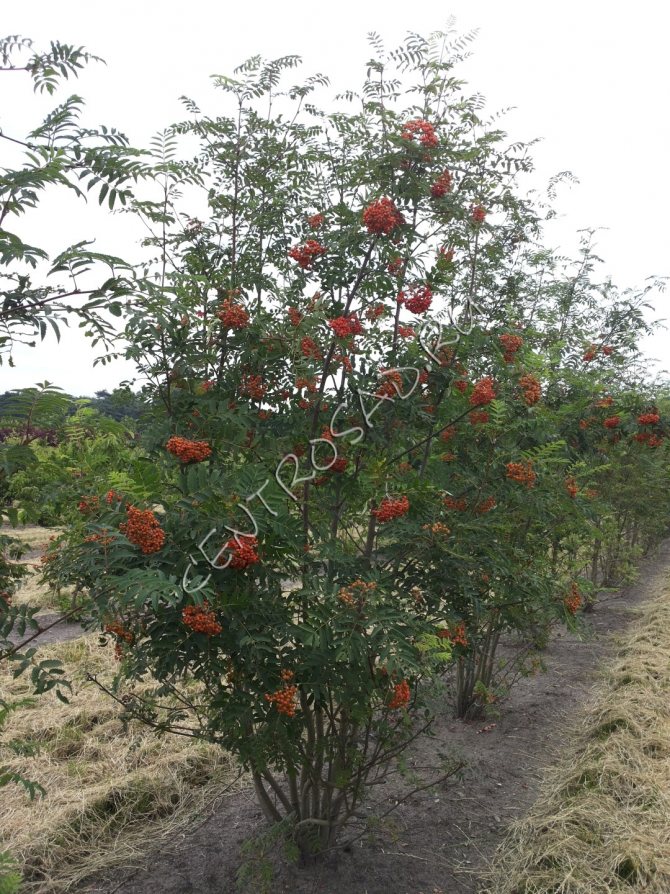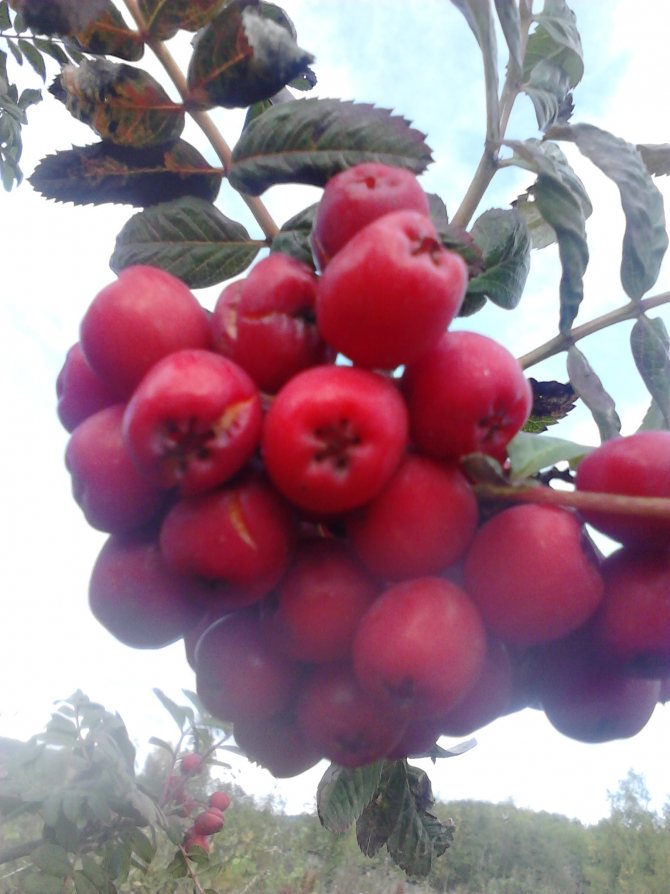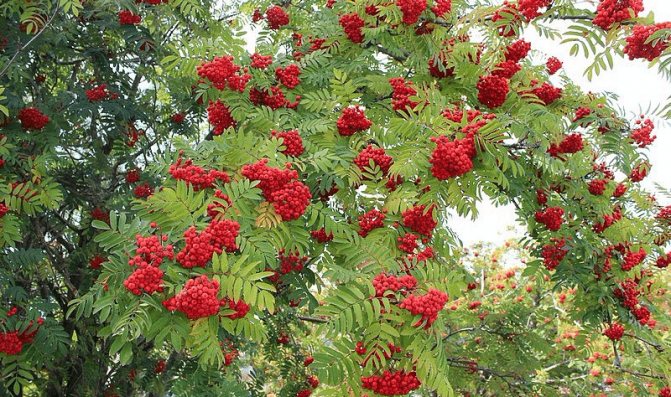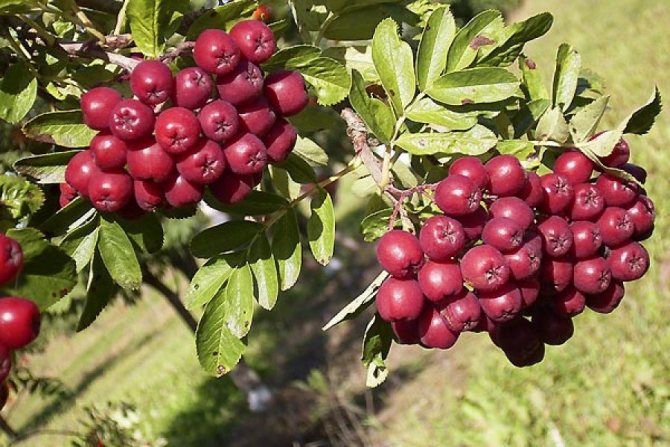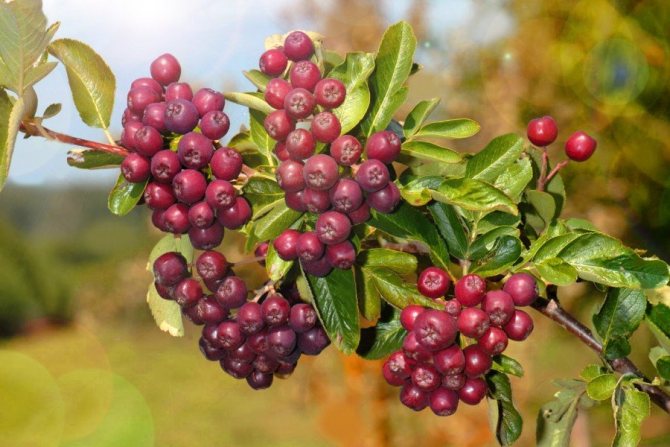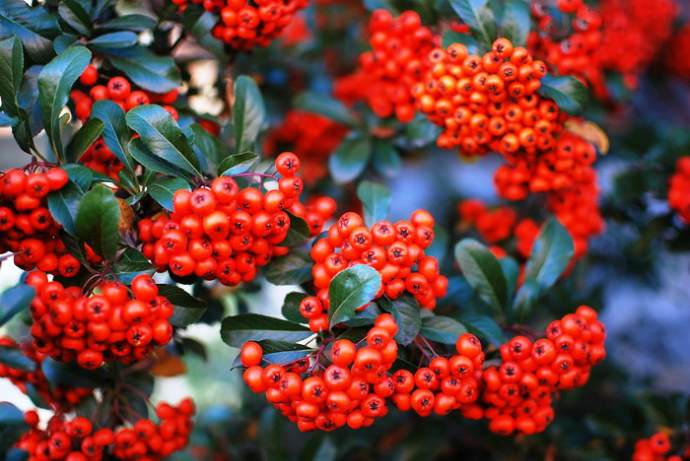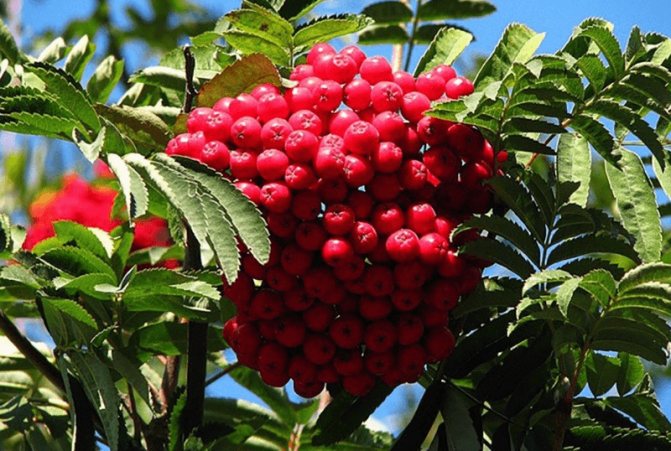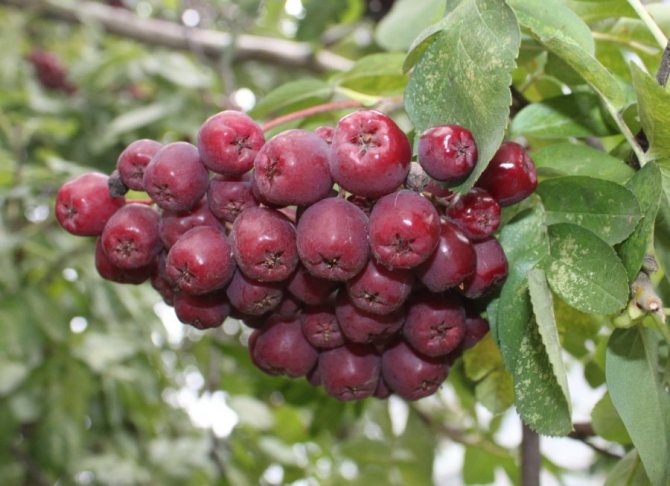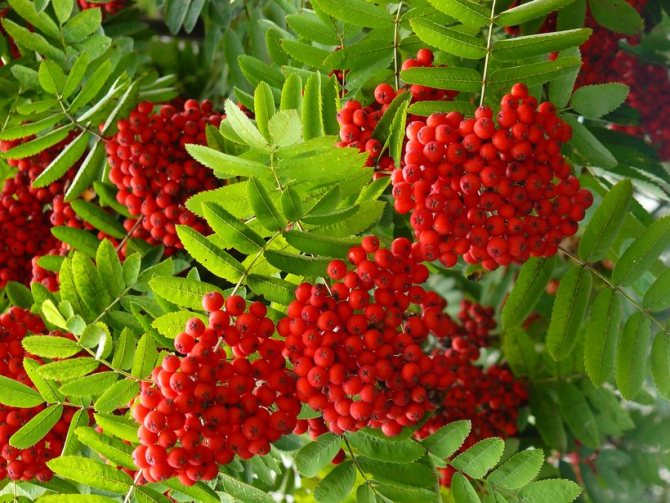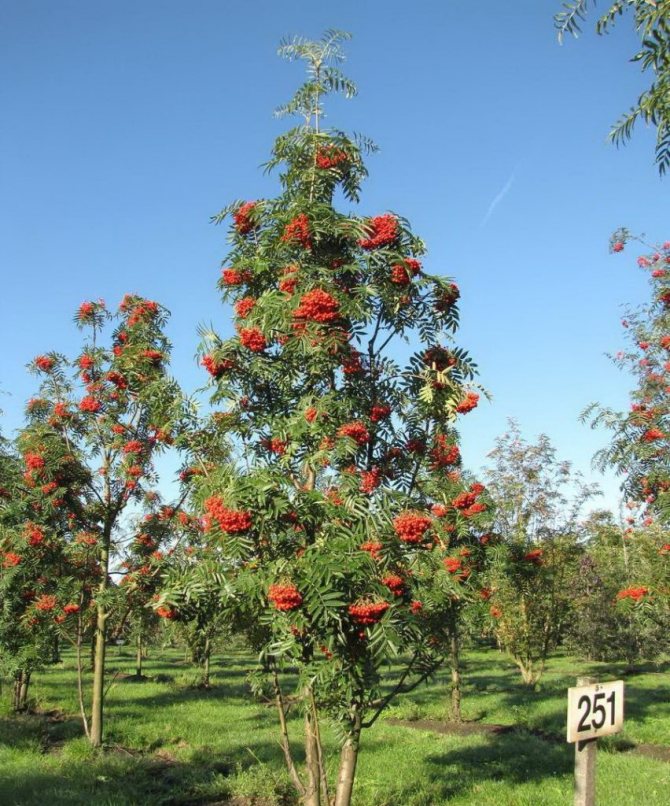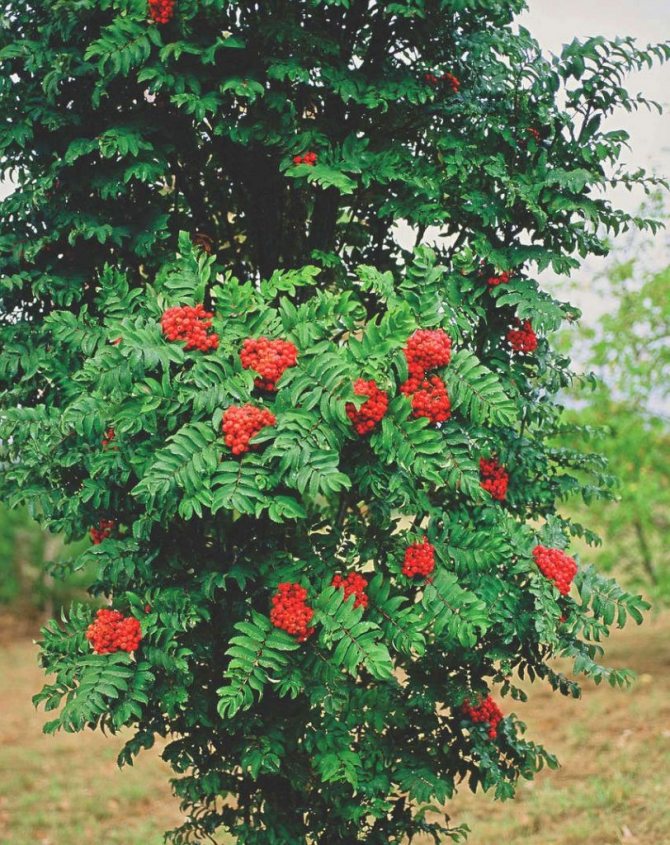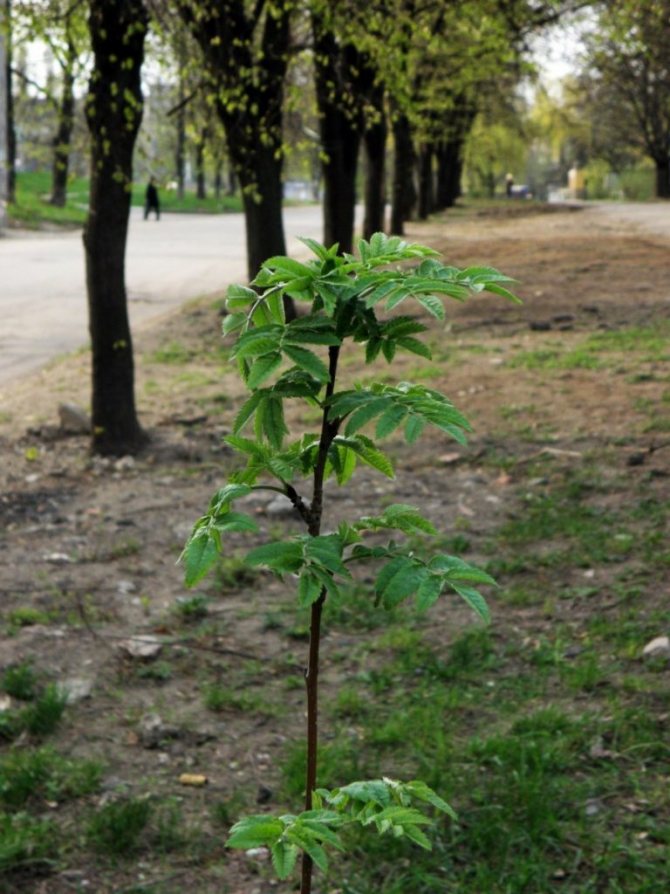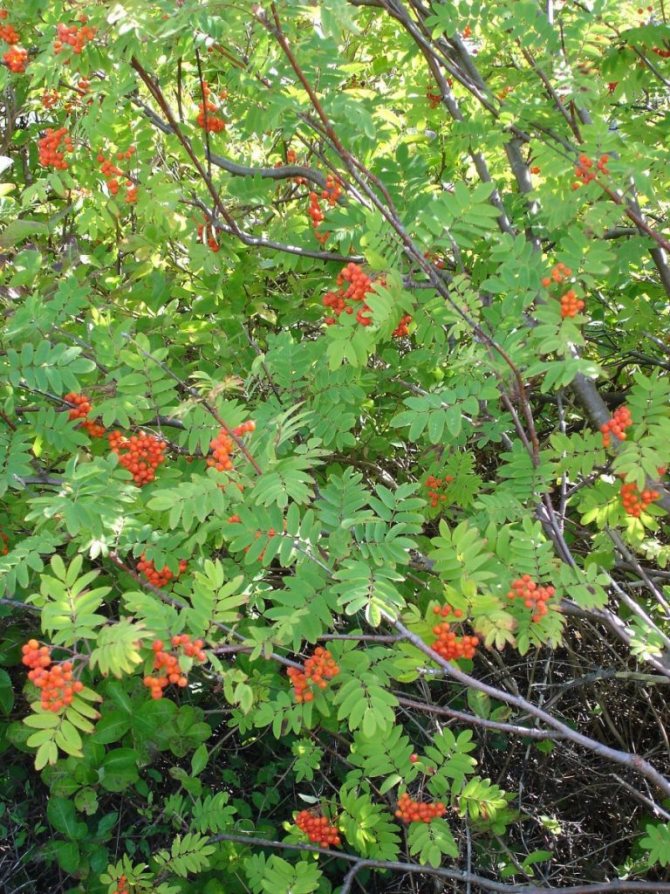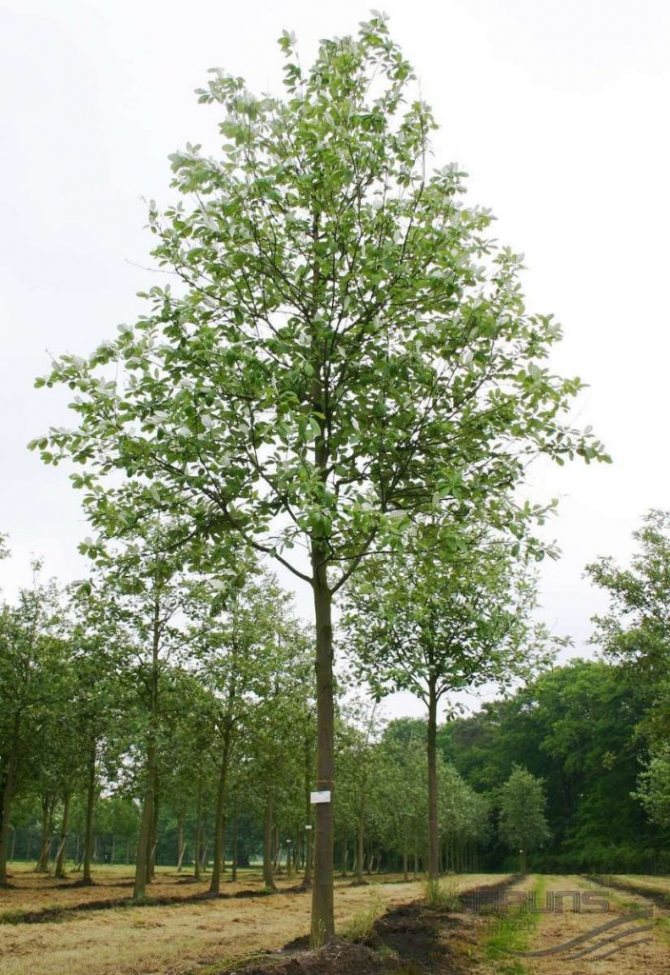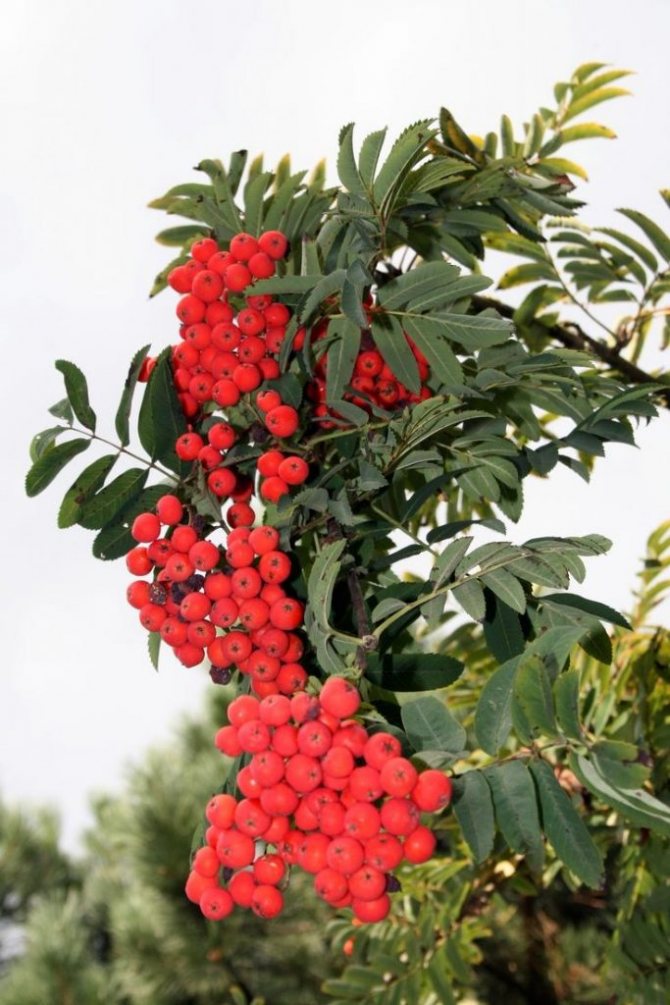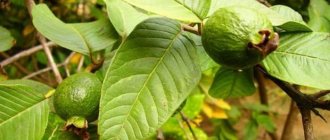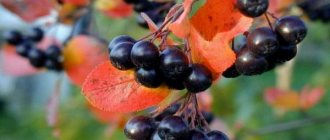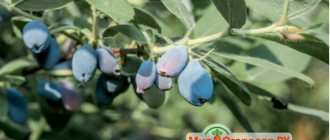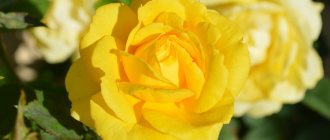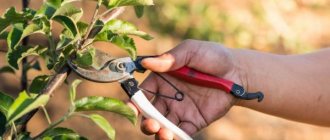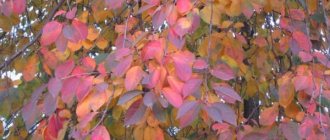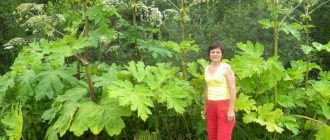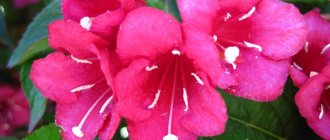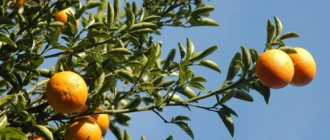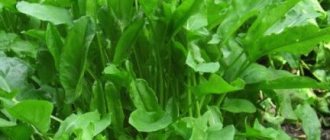Category: Fruit and berry plants
Rowan (Latin Sorbus) is a genus of woody plants of the tribe Apple of the Pink family, in which, according to various sources, there are from 80 to 100 species. And the plant mountain ash ordinary, or red (Latin Sorbus aucuparia) - a fruit tree, a species of the Rowan genus, widespread almost throughout Europe, in Asia Minor and in the Caucasus. The range of the species reaches the Far North, and in the mountains the red mountain ash already in the form of a bush rises to the border of vegetation. The generic name sorbus comes from the Celtic language, translates as "tart, bitter" and characterizes the taste of rowan fruits. The specific name comes from Latin words, translated as “bird” and “to catch”: the fruits of mountain ash attracted birds and were used to bait them.
For a long time, mountain ash has been part of the culture of the Slavs, Scandinavians and Celts, who endowed it with magical powers: it was believed that it patronized the warriors in battles, protected them from the world of the dead and from witchcraft. The rowan berry from the bottom looks like an equilateral five-pointed star - one of the oldest pagan symbols of protection. During the wedding, rowan leaves were placed in the shoes of newlyweds, and travel staffs were made from its wood. The rowan was planted next to the dwelling, and it was considered a very bad omen to damage or destroy the tree.
What are rowan leaves: complex or simple?
The shape of the leaves of mountain ash is varied. When you look at leaves from different trees, you involuntarily ask yourself: "Is the rowan leaf complex or simple?" According to biologists, there are complex, odd-pinnate and simple rowan leaves. Actually, the structure of the leaves determines the division of the shrub into two main subgenera.
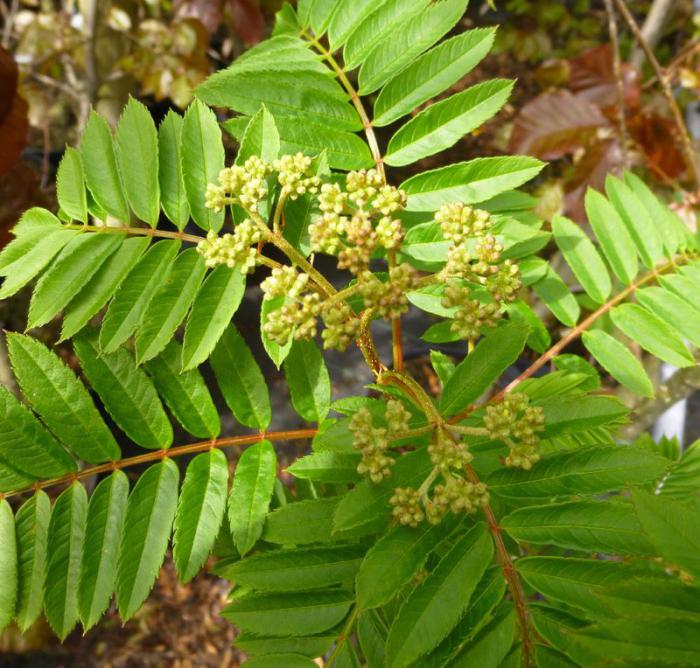
Trees with feathery leaves that form openwork crowns are ranked as real mountain ash trees. Trees of the second subgenus, thanks to simple solid, toothed-lobed and lobed leaves, have rather dense crowns.
The value of real mountain ash is higher. Most of them ripen edible healing bittersweet berries. Regardless of what a rowan leaf looks like, all types of trees are widely used in landscape design when arranging all kinds of garden and park plots. The bushes are great as tapeworms and look great in group arrangements and regular alleys.
Indeed, in decorativeness, the tree successfully competes with competitors (of which, by the way, there are not many), taking away the palm from individual plants. It is beautiful in any season. And when it sparkles with openwork spring foliage. And when the inflorescences shine with white boiling. And when it burns with a bright fire of foliage, touched by autumn crimson, fiery red clusters of tart berries, especially powdered with the first snow.
Landing in open ground
It is not difficult to plant a shrub with leaves like rowan in open ground.
What is needed for landing
All that is required for planting a crop outdoors is a basic knowledge of the plant and its needs and the desire to grow a beautiful shrub.
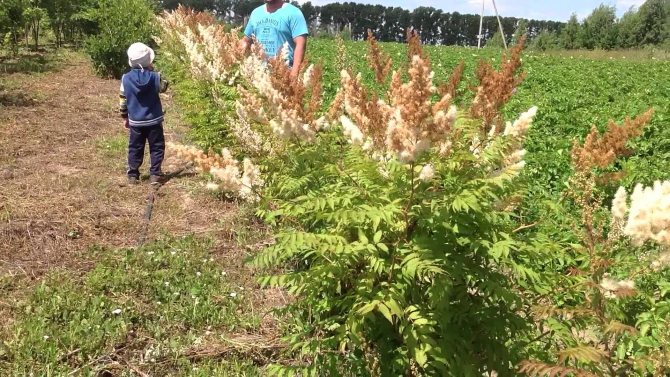

Even a child is able to cope with planting fieldfare
Another point that you need to pay attention to is the right timing for planting a bush. As a rule, planting should be done in early spring before the start of sap flow or in the fall after the fall of the foliage.
Where to plant
Since fieldfare is a highly shade-loving plant, it should not be placed in open sunlight. The shrub will feel much more comfortable in the shade. That is why the culture is often planted under tall villages.
As far as soil is concerned, any type of fertile will do. The plant will feel equally comfortable both in damp and loose soil, and in dense clay.
Planting step by step
Planting a bush in open ground involves a number of steps:
- Dig a hole in the open ground with a depth of about 40 cm.
- The bottom of the pit is covered with drainage material.
- A small amount of planting soil is poured onto the drainage.
- Nitrogen-containing fertilizing is added to the ground in the amount recommended by the manufacturer.
- A seedling is placed in the pit.
- Gently sprinkle the plant with earth and tamp it lightly.
- A neat hole is made near the trunk to prevent moisture from spreading during watering.
- Water the seedling.
Biological description of mountain ash leaf
In the spring, when the rowan buds have just set out to bloom, it is difficult to say right off the bat which bush is in front of us. The tree in which the leaves are completely unfolded is well recognizable. After all, everyone is familiar with the original rowan leaf. Whether a photo of him, a drawing, but everyone saw it. They admired him more than once in a park, forest or garden.
The common petiole is covered with many large feathery small leaves. The construction scheme for each is elementary. It is assembled from several pairs of miniature leaves. Its top is decorated with an unpaired single leaf. Various sources give a more accurate description of the common mountain ash leaf - plants from the Rosaceae family.
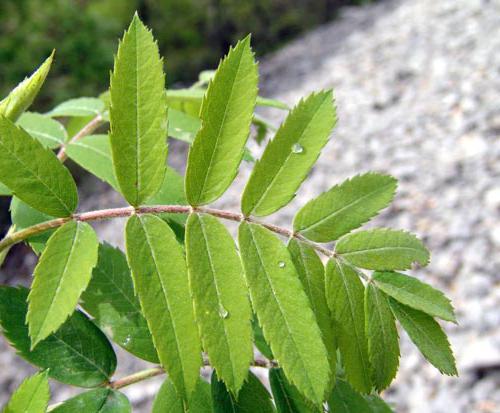

The length of unpaired leaves reaches 10-20 centimeters. The long thin reddish petiole is studded with 7-15 practically sessile broadly lanceolate or elongated, pointed, serrated along the edge, miniature leaves (3-5 cm long), entire from the lower end and sharp-serrate at the apex.
Fieldfare propagation
Most often, fieldfare is propagated in one of the following ways:
- cuttings;
- from layering.
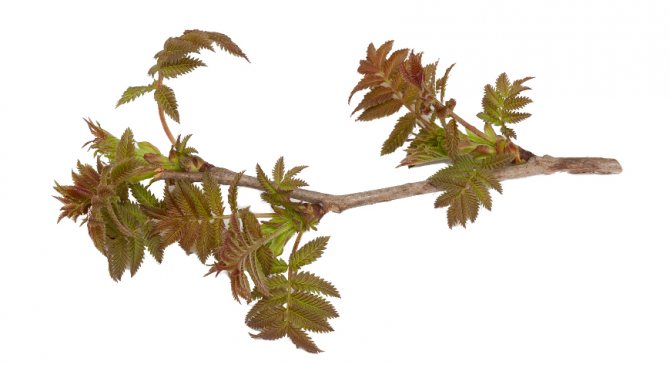

Fieldfare is easiest to propagate by cuttings.
Cuttings
The description of propagation by cuttings does not imply particularly complex manipulations. Therefore, the method is used in practice more often than others. Cuttings are taken from sturdy woody stems. Their length should be 20-30 cm. For rooting, cuttings are planted in a container with soil. Further, it remains only to carefully monitor that the soil remains moist throughout the entire rooting process of the future shrub.
Important! To understand that the rooting of the cutting was successful, you can at the beginning of the growth of the tops.
From layering
It is quite easy to propagate fieldfare from cuttings. To do this, in the spring, take a long and (necessarily!) Completely healthy stem. It is carefully bent to the ground so that the kidneys are in contact with the ground. In this position, the stem is fixed, slightly covering it with earth. It is very important that the tip is on the surface. After a while, the rooting will take place, at the end of summer it will remain to be cut off from the mother plant and transplanted.
Rowanberry shrub in terms of planting and care does not create any particular problems. In order for the cultivation to be successful, and the plant began to bloom, you need to follow some rules regarding watering, feeding and preparing the plant for winter.
Rowan foliage in spring and summer
In the spring, a dense fluff is clearly visible on the leaves. They are covered with hairs both above and below. By summer, the hairs will fall off, the delicate fluff will disappear, exposing the surface, just like it happens with other trees, for example, with an aspen. The fluff of hairs prevents the rapid evaporation of the liquid that saturates young immature leaf blades.
In summer, usually matte, leathery and rough leaves, painted on top in dull green tones, the felt gray underside gleams with pale bluish shades, almost close to white-silver color.
Ruby
The Michurin variety was also lost, but found, multiplied and transferred for variety testing to T.K. Poplavskaya. Like all old Michurin forms, this type of mountain ash has a slight astringency in taste.
Its characteristics:
- A low tree, 3 meters high, with a drooping crown. Skeletal branches are located almost at right angles, shoots are straight, with light brown integuments.
- The leaves are light green, with a finely serrated edge and a pubescent petiole.
- Scutellum not wide, flowers small, pinkish-white.
- Fruits are rounded-flattened, weighing 1.3 g. The skin is ruby-colored, the flesh is yellow. The taste is sweet and sour, slightly tart. The purpose of the fruit is for processing into juices, jellies, wines, liqueurs, jelly. Suitable for drying.
The plant is resistant to low temperatures.
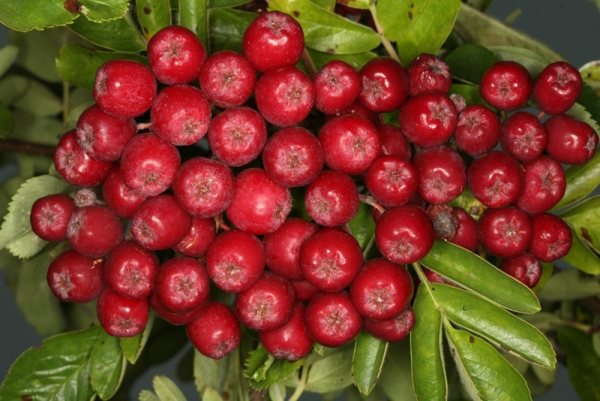

Rowan variety Rubinovaya is good for processing into juices, jellies, wines, liqueurs, jelly
| The chemical composition of the fruit | |
| Sugar | 12,4% |
| Organic acids | 1,3% |
| Vitamin C | 21 mg / 100 g |
| Anthocyanins | 948 mg / 100 g |
Rubinovaya rowan fruits can replace raisins after drying. To do this, you need to place them in a gauze bag and hang them for a while by the battery.
Rowan leaves in autumn
Green in summer, rowan leaves go through three stages of coloration in the fall. Yellow at the beginning, they gradually acquire shades of orange (from light to intense). And at the end they are painted in a crimson color palette. The plant's autumn crown glows with golden, orange and terracotta tones.
The foliage that has outlived its own begins to fall off. But rowan does not lose whole leaves (unlike many other trees and shrubs). The component parts are crumbled from the pinnate leaf one by one. He, losing miniature leaves one by one, seems to be falling apart into separate parts.
The petiole of a huge leaf is gradually bare. And only when completely naked does the main brick-red vein part with the plant, flying away from it in the last turn.
Description of the fieldfare mountain ash shrub
You can meet this shrub most often near the shores of large bodies of water. It forms dense coastal thickets. Distributed in Siberia and Mongolia, but also found in the Far East. Fieldfare is a bush that grows up to 2 m. Shoots are gray, long and straight.
In the spring, the crown of the plant pleases the eye with the overflow of orange-pink leaves, and with the onset of cold weather, it becomes darker, crimson. It blooms with large 30 cm white inflorescences throughout the summer. Once the shrub is 2 years old, it begins to bloom every year. The seeds of the plant are stored in accrete leaves. The panicles do not have a decorative function, therefore, they are cut off in the autumn.
The leaves of this shrub are really very similar to rowan, hence it got its name. By their structure, they are practically indistinguishable, however, in an ornamental shrub, greenery can play with an abundance of colors throughout the year. The leaves are pierced through with thin veins, which gives them a special, unique look.
The shrub fully reveals its potential in the spring. At first, the foliage shimmers with yellow shades, and by July it turns green and takes on a light, bright appearance. The new greens will differ in color from the earlier ones, which gives the plant a certain peculiarity.
After reading the description of the shrub, look at the photo of the fieldfare:
Rowan Aria
An unusual solid-leaved tree dotted the Western European sparse forests. It, rising up 10-12 m, spreads its luxurious crown 6-8 m in breadth.
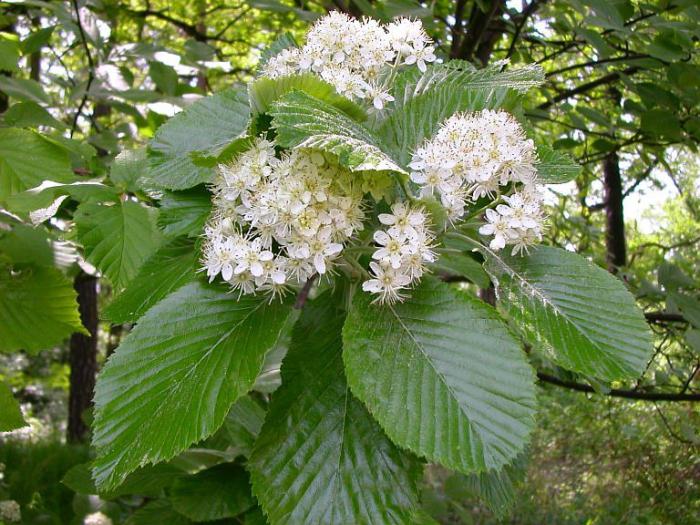

The shape of the Aria rowan leaf is similar to those that are sprinkled on alder branches.It is solid, rounded-elliptical, leathery, with a pointed or obtuse apex, sharply double-serrate at the edges, reaches a size of 14 x 9 cm. Its top is juicy-green in summer, and the bottom is white-felt, grayish, as if powdered with flour.
Therefore, in Russian it is called powdery mountain ash. The tree, gleaming with silvery foliage, shimmering in the breeze, effectively contrasts against the colorful background formed by the surrounding plants.
I wonder then, what color are rowan leaves in the fall? Aria's autumn foliage is colored in a special way. Her immense crown shines with chic bronze shades with the onset of autumn.
Diseases and healing properties of fieldfare
The fieldfare shrub is resistant to diseases and harmful insects. However, the green aphid remains its main enemy. It feeds on the sap of the bush, which causes the foliage to dry out. Spider mites can also damage greens. A solution of phytoverm at the rate of 30 ml per 10 liters of water will help to overcome harmful insects. From the folk methods of fighting aphids, it is worth highlighting infusions of dandelion, garlic and onions.
If yellow spots appear on the foliage, this is the first sign of a viral mosaic. Unfortunately, it is impossible to cure a plant from this disease, therefore, in case of severe damage, the shrub should be disposed of.
Pay attention to the photo of a healthy field bush:
Fieldfare is known all over the world for its medicinal properties. Its leaves contain a high concentration of flavonoids. It is used in the treatment of rheumatism. Inflorescences are used for tinctures and aromatic baths. The roots of the plant are used to prevent tuberculosis. Blossom tea helps fight throat ailments such as sore throat.
Look at the photo of mountain ash-leaved fieldfare. It is he who is most often used in traditional medicine:
Rowan intermediate
This species, often called the Swedish mountain ash, is represented by single slender trees 10-15 meters high, growing wild in Central European, Baltic and Scandinavian forests. A whole leaf of rowan, a photo of which was photographed by professionals and amateurs, is very thin.
Above in summer it is dark green, below it is pubescent with gray hairs, in autumn it is reddish. The shape of the shallow, on average twelve-centimeter whole leaves is oblong-ovate. Decorative silvery foliage forms an original oval crown around a smooth grayish trunk.
Care
Watering
Fieldfare is an unpretentious plant, it is easy to take care of it. But he cannot do without regular watering. The culture does not tolerate drying out very well. It is especially important to moisten the soil immediately after planting.
On average, two plentiful waterings (2 buckets of water for each bush) within a month are enough for a shrub. If the summer is hot and dry, it is recommended to double the number of procedures performed.
Important! It is recommended to water young plants more often than mature ones. They need more water to grow.
Top dressing
The field plant is in vital need of regular application of organic fertilizers to the soil. You can add organic matter directly to the surface of the trunk circle in small portions.
Of the mineral compositions, the bush needs nitrogen, potassium and phosphorus. It is allowed to introduce useful elements into the soil in the form of granules without prior dissolution in water. For 1 square meter of planting, 20 grams of universal mineral fertilizer is enough.
During flowering
The plant does not need any special care during the flowering period. It is enough to ensure that the soil directly under the bush never dries out, and from time to time (as it dries) remove wilted inflorescences.
At the end of flowering
After the fieldfare has completely bloomed, all inflorescences and fallen leaves are removed. At the same time, the number of waterings is reduced to a minimum.
Preparing for winter
Due to the high level of frost resistance, the field ash does not need to be prepared for the winter period - it tolerates even the most severe frosts without insulation.
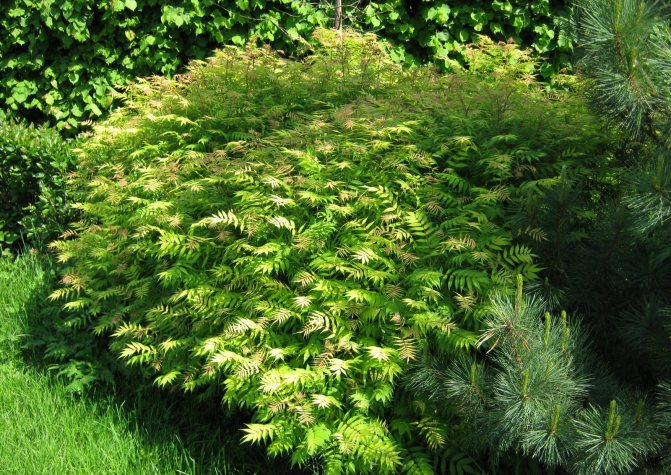

Fieldfare is a very beautiful and easy-care plant
Elderberry rowan
Shrubs scattered along the undergrowth and independent thickets of Elderberry Rowan settled in the vastness of the Khabarovsk Territory, Kamchatka and Sakhalin. They captured the Okhotsk coast, the Kuriles and penetrated into Japan. Shrub trees are distinguished by their relatively low height (up to two and a half meters), straight, naked, dark-brown offshoots with a bluish bloom, and a rounded ovoid sparse crown.
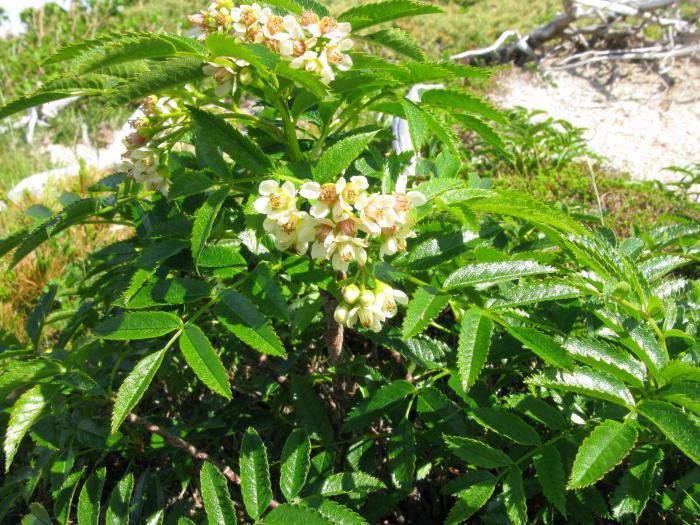

On gray branches with clearly defined lenticels, unpaired 18-centimeter leaves are concentrated. The petioles of a terracotta scale are decorated with oval-lanceolate sharp-serrated leaves, almost naked, glossy dark green. Their number varies from 7 to 15.
Titanium
This variety is one of the surviving Michurin creations.... It was created by a complex crossing of rowan, pear and red-leaved apple.
Its characteristics:
- Medium-sized tree (up to 5 meters) with a sparse rounded crown. Shoots are straight, the color of the bark is dull brown.
- Leaves are glossy, dark green.
- Inflorescences are scutes of medium diameter, the color of the petals is white.
- Fruits are slightly ribbed, rounded, weighing 1.2 grams. The skin is dark red, waxy. The pulp is yellow, sweet and sour, tart. The use is universal.
The Titan variety is frost- and drought-resistant, not affected by diseases.
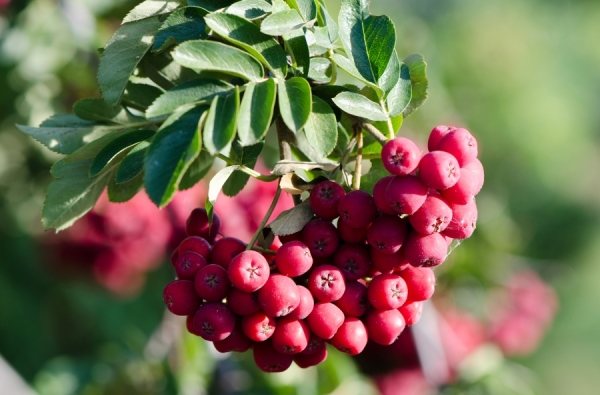

The rowan variety Titan was bred by Michurin, frost and drought resistant, is not affected by diseases
| The chemical composition of the fruit | |
| Sugar | 10,2% |
| Organic acids | 1,4% |
| Vitamin C | 33 mg / 100 g |
| Dry matter | 20% |
Rowan Köhne and Vilmorin
These original upright trees are representatives of the Chinese flora. They have chosen to live in forests that cover temperate and warm zones in Central China. Vilmoren differs from Köhne in its greater height (the first up to 6 m, the second up to 3 m) and decorative crown.
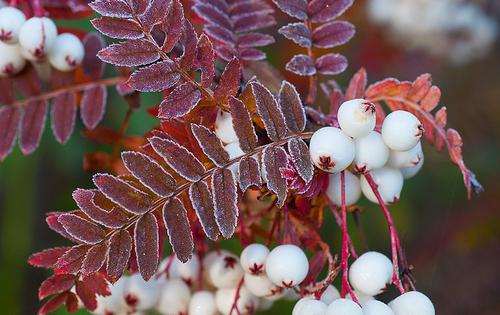

The crowns of plants are strewn with odd-pinnate leaves. On 20-centimeter petioles, 12-25 leaves fit, the edges of which are sharply serrated from top to base. The seasonal rhythm of these plants is very close. The autumn leaf of mountain ash is painted in purple, red-violet colors.
Origin and appearance
Fieldfare bush (Latin Sorbaria) belongs to the Pink family. The plant is found in many Asian countries.
The genus is represented by only 10 varieties of culture. The name that the bush has comes from "sorbus", which means "mountain ash" in Latin. A similar name is associated with the fact that the leaf plates of this culture are almost identical to rowan ones. The only difference is that the rowan leaf is usually slightly larger.
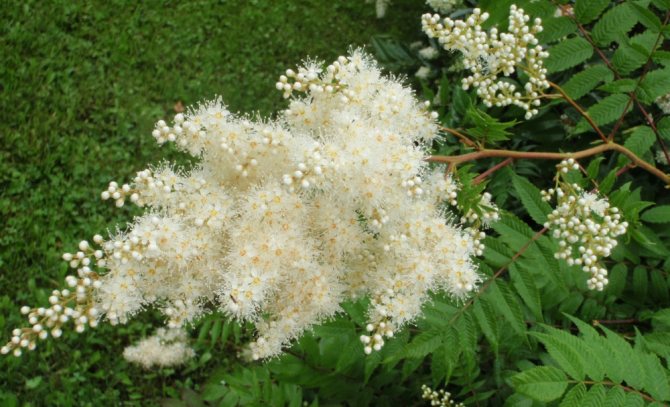

Amazingly beautiful fieldfare flowers can be the best decoration of the infield
As an ornamental plant, fieldfare has been planted for a long time - from about the 18th century.
The plant is characterized by sinuous gray-yellow stems. The bush itself can grow up to 3 meters. Flowers of an ornamental shrub form panicle inflorescences in the form of a pyramid, consisting of a large number of small flowers. The latter can be white or cream in color.
Rowan foliage Glogovin
Bereka medicinal (the second name of the plant) can be found in the Caucasus and the Crimea. She captured part of the Ukrainian lands, those that stretched across the south-west of the country. Its natural range is spread over Western Europe and Asia Minor. Single trees and compact groups now and then come across in the undergrowth and shrub thickets, in the second tier of forests and on sunny slopes.
Slender 25-meter rowan trees are covered with rounded crowns. The offspring shimmer with olive shades. The relict trees are dark gray, riddled with cracks. Possessing a long (up to 17 centimeters) plate, the mountain ash leaf is simple, broadly ovate.
The plate is rounded-heart-shaped at the base, and its tip is pointed.It has finely toothed edges and has 3-5 sharp blades. Its top is glossy, dark green in color, and the bottom is hairy-pubescent. The autumn palette of leaf blades ranges from yellow to orange.
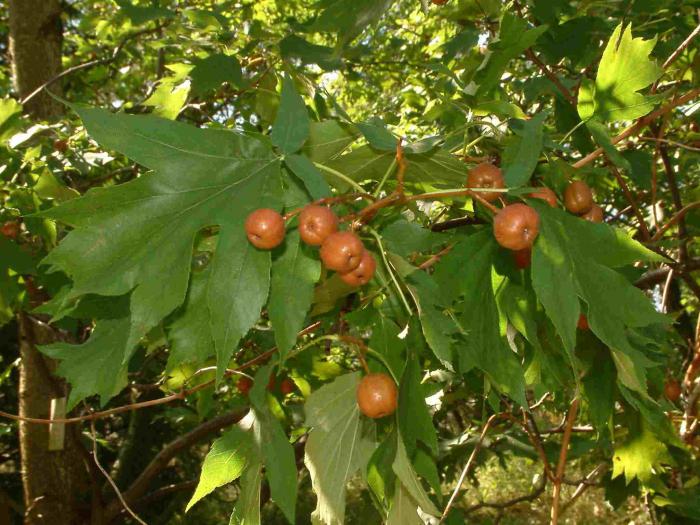

There are two varieties of Glogovina: pinnate and pubescent. From the one and the other, they form magnificent solo, group and alley landings.
BUY ROWAN SEEDLINGS IN THE NURSERY
The Scientific and Production Association "Sady Rossii" has been introducing the latest achievements in the selection of vegetable, fruit, berry and ornamental crops into the wide practice of amateur gardening for 30 years. In the work of the association, the most modern technologies are used, a unique laboratory for microclonal reproduction of plants has been created. The main tasks of NPO Sady Rossii is to provide gardeners with high-quality planting material for popular varieties of various garden plants and novelties of world selection. Delivery of planting material (seeds, onions, seedlings) is carried out by Russian post. We are waiting for you for shopping: NGO "Gardens of Russia"
[/ td]
Rowan alder-leaved
Primorye, Japan, Korea and China affected trees scattered and knocked down into groups with narrow pyramidal crowns of alder-leaved mountain ash. They scattered across broadleaf and cedar forests. Straight, glossy dark brown trunks, directed into the sky, reach a height of 18 meters.
Distinctive features of the leaves are simple, broadly oval, sharp-toothed forms, clearly pronounced venation, in the length of a dense leaf blade, not exceeding 10 cm. Their outlines are similar to alder leaves. Hence the name of the tree came from.
The spring light green leaf of mountain ash casts a slightly bronze bloom. In a summer leaf, the lower surface is yellowish, and the upper one is intense dark green. Autumn shines with juicy bright orange hues. The tree is especially beautiful at the time of spring flowering and autumn leaf fall.
Bead
Variety created Candidate of Agricultural Sciences Tatiana Kirillovna Poplavskaya... Fanatically devoted to science, in the 70s of the XX century she was actively engaged in the search and restoration of the lost Michurin varieties of mountain ash.
The bead is one of the first varieties that do not have a tinge of astringency. It is a product of free pollination of Nevezhinskaya mountain ash.
Characteristics and description of the variety:
- A plant of moderate growth, 3 meters high. Shoots are gray-brown, straight. Begins to bear fruit, according to various sources, at 3 or 5 years of age.
- Leaves are light green, serrated.
- The inflorescences are large, with white flowers.
- Fruits are regular, rounded, with a red skin, weighing 1.2-1.9 grams. The pulp is creamy, with a hint of cranberry flavor, but no strong acid. The appointment is universal. Ripen early, by the end of August.
Particularly valuable qualities of the variety - high resistance to extreme frosts, drought, diseases. The yield is high.
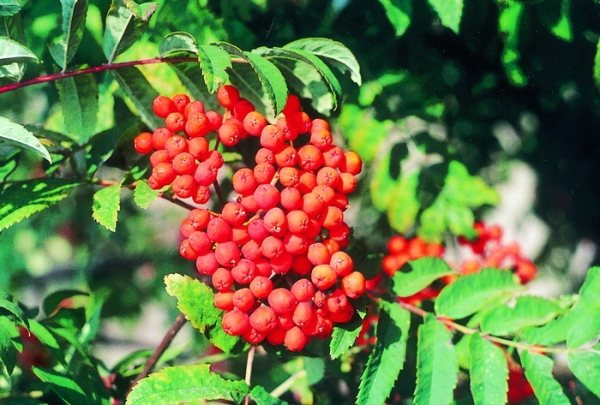

Rowan variety Businka has no astringency, is highly resistant to extreme frosts, drought, diseases
| The chemical composition of the fruit | |
| Sugar | 10% |
| Organic acids | 2,2% |
| Vitamin C | 67 mg / 100 g |
| Carotene | 9 mg / 100 g |
| Dry matter | 25% |
Interesting Facts
There are several interesting facts about mountain ash that few people know about.
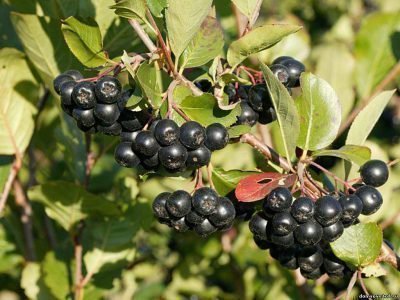

- Berries lose their bitterness immediately after the first frost.
- The fruits are not berries, they are more like apples in their structure.
- It is an excellent antiseptic.
- The bitterness of the fruit is poisonous.
- Relieves stress by leaning against a tree and closing your eyes for a few minutes.
- Chokeberry is no longer a mountain ash, but its relative - chokeberry.
- The lower part of the berry forms a five-pointed star, which is a strong talisman against evil.
Storage
You can start collecting rowan bunches in late August and early September. At this time, the berries are dense and juicy, so they are hung with brushes in a dark and cool place, using as needed. Since during this period the fruits have not yet lost their bitterness, it is worth using them only for medicinal or cosmetic purposes.For long-term storage, it is required to dehydrate them in a dryer or in the oven, leaving them for 4-6 hours at a minimum temperature. The fruits will be ready for "wintering" when they stop sticking to the fingers when squeezed. You can store dried berries in glass, plastic or iron jars. The fruits collected after the first cold weather cannot be stored warm: they must be immediately frozen or preserved.
Prescriptions for various diseases
ATHEROSCLEROSIS Pour 200 g of dried bark (it is advisable to remove the bark from young branches of mountain ash) with 0.5 liters of boiling water and boil over low heat for 2 hours. Take 1-2 tablespoons 1 time per day. HEMORRHOUS Drink the juice of fresh mountain ash 3 times a day, two small glasses with added sugar and a glass of water. DISEASES OF THE STOMACH AND INTESTINAL Take the fruits and flowers of the mountain ash - 3 parts and the roots of calamus - 1 part. Pour 1 tablespoon of the mixture with 1 glass of cold water, leave for 1 hour, boil for 5 minutes, cool, strain. Drink 1/2 cup warm 3 times a day before meals. EXHAUST, LOW BLOOD Pour 2 teaspoons of rowan berries with 2 cups of boiling water, leave for 1 hour, add sugar to taste and drink during the day for 3-4 doses. CARDIOSCLEROSIS Pour 200 g of mountain ash bark with 0.5 liters of water and simmer for 30 minutes. Take half an hour before meals, a tablespoon 3 times a day.
Folk omens and superstitions
Many signs are associated with this plant:
- flowers that opened early meant a warm summer;
- unopened and fallen flowers meant a late winter;
- berries ripened too early means that the winter will be long, and the spring will be late;
- a huge amount of fruit meant long winter frosts;
- if unripe berries fall off, the harvest will be rich, and the summer will be rainy.
Several beliefs have survived.
- If 3 trees are planted around the house, then the house will be protected from fires, thefts and other disasters.
- Rowan, which is planted in the yard, will restore health to the patient.
- Two trees by the porch drive away people with evil thoughts and protect the hosts from guests who were not invited.
- If one rowan grows near the ancestral house, the women of this family have a disposition for magical abilities.
- A hint of a quick wedding is considered a presented bouquet, which contains rowan berries.
- If you hang a twig over the window frame, then the house and its owners will be protected from the evil eye.
- Scattered fruits speak of a future happy time with a soul mate.
- To preserve natural beauty and youth, berry beads are advised.
Breeding [edit | edit code]
The mountain ash has a bitter taste, which reduces their nutritional value. Only in the 19th century were mutant forms with fruits devoid of bitterness isolated. The 'Edulis' cultivar was originally found in 1810 in the Altwater mountains near Spornhau. Later in 1899, another form with non-bitter fruits was discovered, called 'Beissneri'.
Over a two-hundred-year history, many seed offspring of these rowan trees have been obtained, united in the Moravian cultivar group. The selection among the seedlings was aimed at increasing the mass of fruits. The most large-fruited and productive forms were fixed by means of vegetative reproduction. Reproduction of two forms - 'Rossica' and 'Rossica Major' - was started by the German company of Shpet in 1898 and 1903. They had fruits about one and a half times larger than those of the original forms of the Moravian mountain ash. Later, other large-fruited varieties of the Moravian cultivar group were obtained in Germany at the Institute for Breeding Fruit Crops Dresden-Pilnitz and at the Fruit and Berry Institute in Drazdiany in the Czech Republic [6].
In Russia, non-bitter forms of common mountain ash were found in the village of Nevezhino, Nebylovsky district, Vladimir region [7], from where they spread widely in the center of Russia. By means of folk selection, a number of varieties were selected subsequently registered under the names ‘Kubovaya’, ‘Yellow’, ‘Red’.The variety of forms is due to both seed reproduction and the selection of kidney mutations. Several promising varieties of the Nevezhinsky variety group were registered by the Soviet pomologist E.M. Petrov. Later, he continued breeding work with mountain ash and received a number of hybrids from crossing the Moravian and Nevezhinsky mountain ash with each other and Michurin varieties.
The Russian breeder I. V. Michurin played an extremely important role in improving the range of mountain ash. As the main object of his work, he used the common bitter mountain ash, which he crossed with chokeberry, rowan glovina, apple, pear, hawthorn and medlar.
In the future, work on the selection of mountain ash continued in the city of Michurinsk in VNIIG and SPR. There were created varieties ‘Businka’, ‘Vefed’, ‘Daughter of Kubovoy’, ‘Sorbinka’, which are the result of crossing the Nevezhin and Moravian mountain ash.
The selection work with mountain ash was also carried out in VIR and other Russian institutions [6].
Medicinal properties
The fruits of mountain ash have long been used by people as a folk remedy. Rowan berries contain various vitamins, as well as glucose, fructose and sorbic acid. All these components very useful for the bodyespecially weakened by illness.
- It is necessary to designate some ailments for which decoctions of useful mountain ash berries are sometimes used. It is recommended to drink such decoctions for hypertensive patients and people suffering from atherosclerosis. Also, this folk remedy can help with disorders of the heart, kidneys and liver. Rowan juice can be used in cases where a person has gastritis, hemorrhoids or low acidity. One of the useful components of the fruits of this plant - sorbic acid - can become a serious assistant in the fight against dysentery bacillus and staphylococcus.
- The berries of the plant are sometimes used as a food preservative and also to purify water. Our ancestors even had a certain way of purifying water - at night, a branch of this plant was simply thrown into a bucket of water. This method not only allowed the water to remain fresh for a long time, but also imparted a pleasant aftertaste.
Choosing a landing site and landing
Rowan is planted around the perimeter of the site. In order not to shade the beds, it is better to place the trees on the north side.
The culture grows even on non-humus soils, but bears fruit abundantly only on organic-rich light and medium loams capable of retaining moisture.
Planting is possible in October or early spring. The culture starts growing early, so the spring planting must be completed in April. The berry is self-fertile, but it is better to plant 2-3 varieties in one area - so the yield will be higher. The distance between the trees is 4-6 m.
The depth of the planting cut is 60-80 cm. The deepening is filled with fertile soil removed during the digging of the pit, with the addition of ash, superphosphate and two-year-old cow humus. Everything poured into the pit is mixed well.
It is necessary to plant rowan in autumn or spring so that the root collar (grafting site) is flush with the soil surface. The planted plant is abundantly moisturized and pruned by a third. If it is planned to create a hedge, the tops of the branches that appeared in the year of planting are removed next spring.
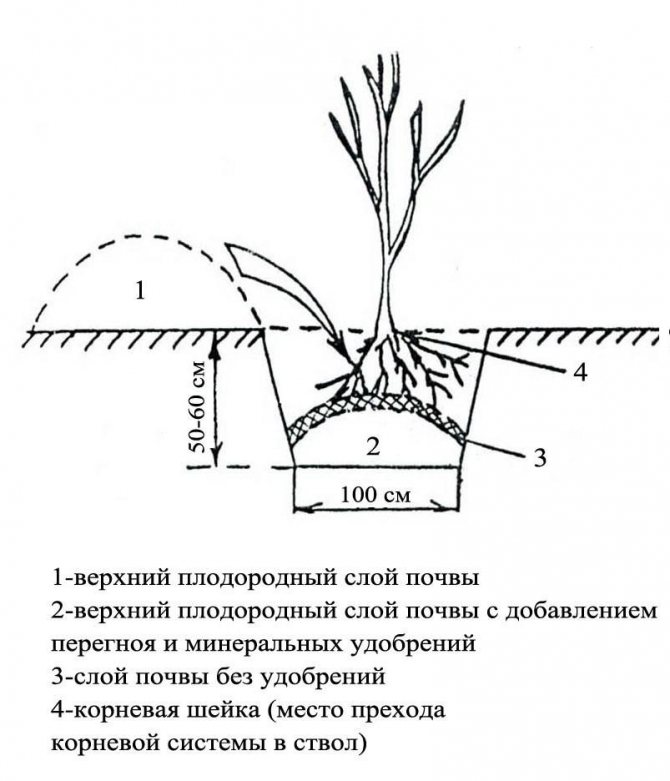

Ritual meaning
Rowan was used in various rituals. For the wedding, leaves were placed in the shoes of the bride and groom.
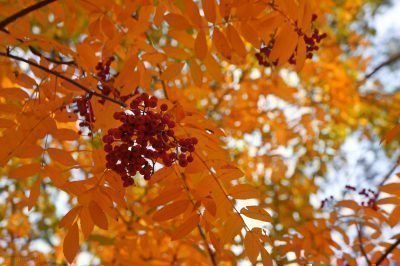

This was done as a protection from dark witches and sorcerers, so that the newlyweds would not be hindered by evil thoughts in a happy and long life.
The fruits of the tree were used as amulets. It was believed that the words on the branches and clusters of this bush saved from damage, protected from the world of the dead and the evil eye. The rowan was planted next to the house to protect it and attract happiness, so its damage signified trouble for the owners.
Growing
Agrotechnics
Highly winter-resistant (excellent), insufficiently drought-resistant (satisfactory), affected by diseases and pests (satisfactory). Photophilous, undemanding to soil, but hygrophilous.
In the south of Russia it blooms in early June, the fruits ripen in September (good).
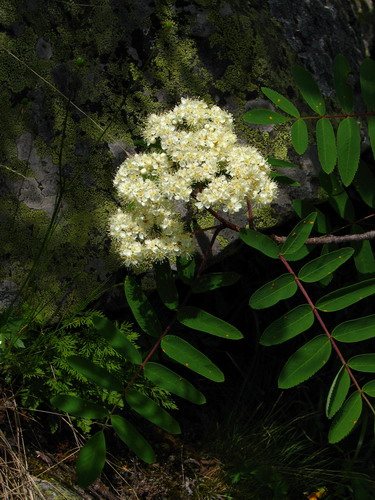

Rowan
Reproduction
Propagated by seeds.
Varieties
Related species of mountain ash - Siberian, Amur, Kamchatka and Tien Shan, are also used in medicine.
Is there a mountain ash with white berries
At the moment, more than 100 different types of mountain ash are known - wild and domesticated. In Russia, mainly trees grow with red, orange and, less often, yellow berries.
However, sometimes there is also a white mountain ash. In the wild, she prefers to settle in mountain pine forests, for example, in the regions of Central China, on the slopes of the Western Himalayas. At the same time, in our latitudes, white rowan is still not common. However, it is quite possible to cultivate it both in the Moscow region and in the North-West.
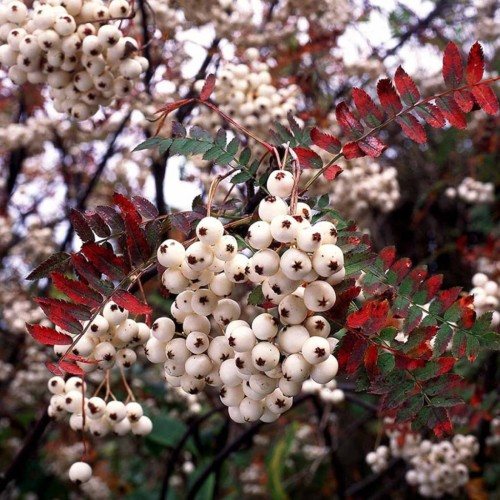

The white rowan, in comparison with the ordinary one, differs in the color of the fruits and more graceful leaves.
Preparing the soil for planting
Any kind of mountain ash is considered a rather unpretentious tree. It grows well even in shaded areas. But in order for the beneficial properties of mountain ash to be fully manifested, it is necessary to plant it in an area well-lit by the sun. Under these conditions, the crown of the tree will be beautiful and spreading, and the berries will be juicy and rich.
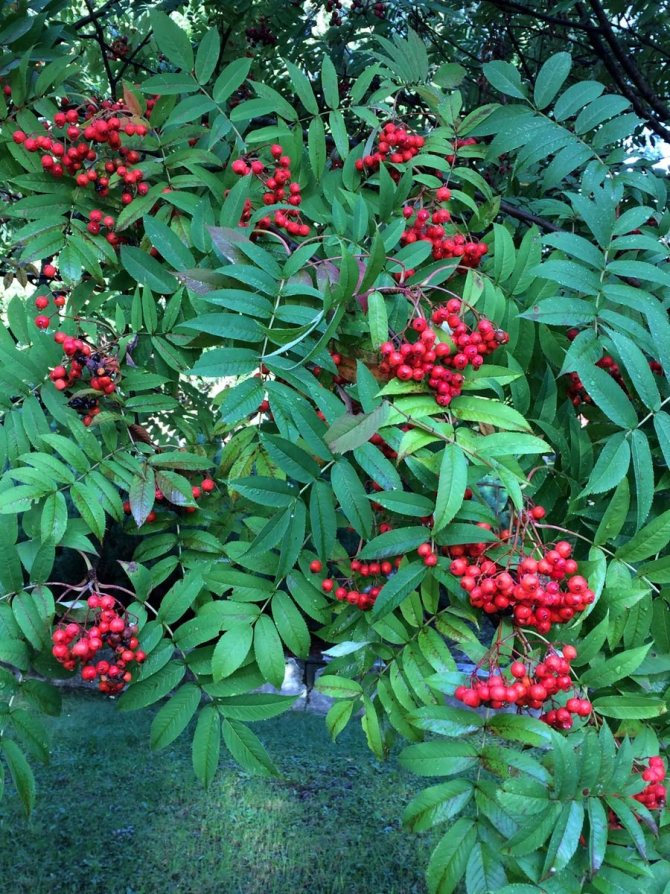

The tree is usually planted in late autumn, after the juice stops moving. The end of October - beginning of November is considered the most optimal for planting.
Light loamy and sandy loam soils are usually chosen for planting. If the soil is heavy, it is lightened by adding sand and compost. If the land is poor, then nutrient organic mixtures should be introduced in large quantities before planting.
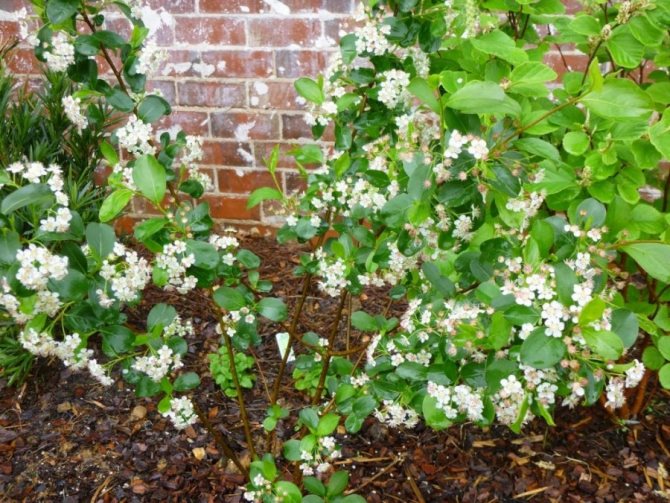

The planting pit is prepared a month or two before planting. It has a diameter of about 60 cm at a depth of half a meter. Two weeks before planting, it must be filled with humus or matured compost. Subsequently, 30 g of potassium salt and 100 g of superphosphate fertilizer are added to the resulting mass.
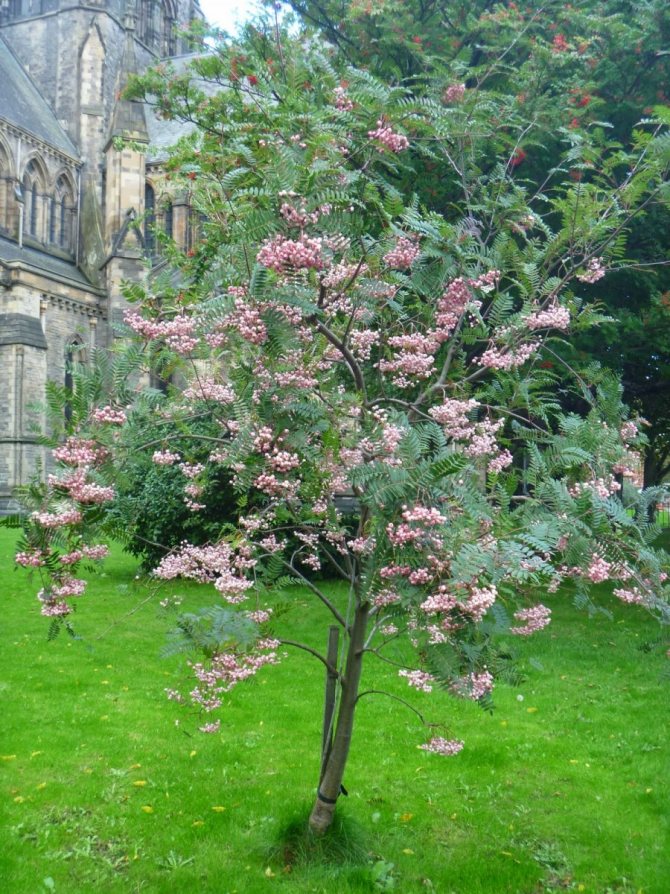

For clayey, heavy soils, a deeper planting hole is required. A drainage layer consisting of sand and gravel is introduced at its bottom.
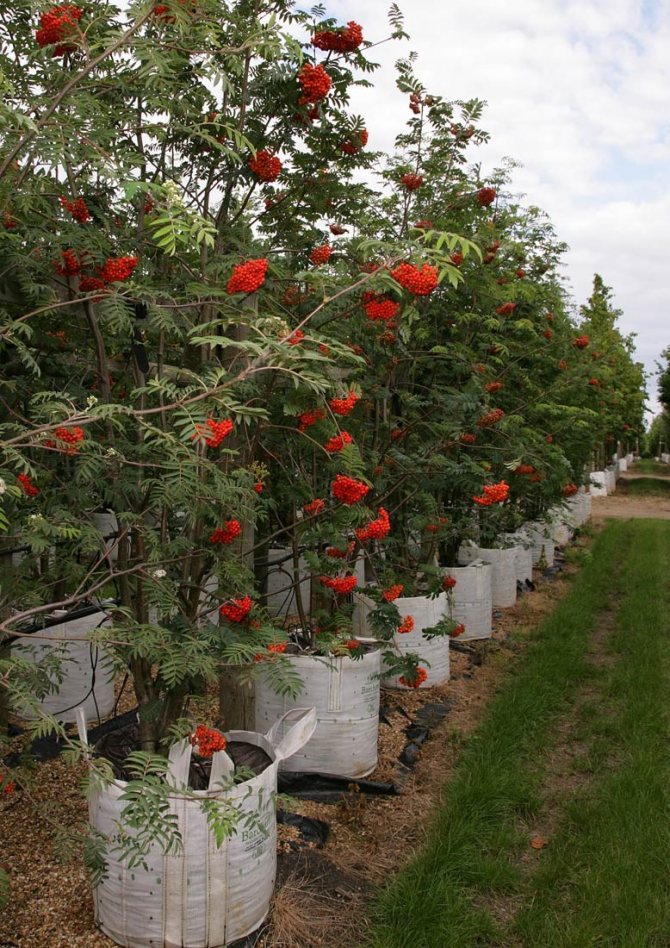

Planting a rowan tree is carried out in the same way as other garden seedlings. The root system should be carefully spread out, making sure not to cover the root collar with earth.
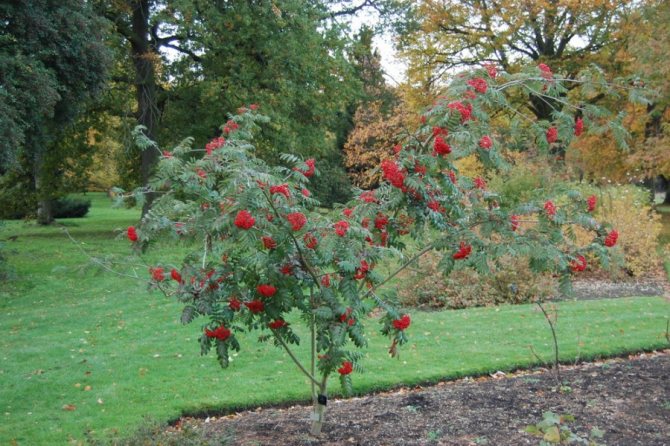

After planting, the young tree is watered, and so that the ground around the plant does not dry out, it is recommended to mulch the trunk circle with dry grass or compost.
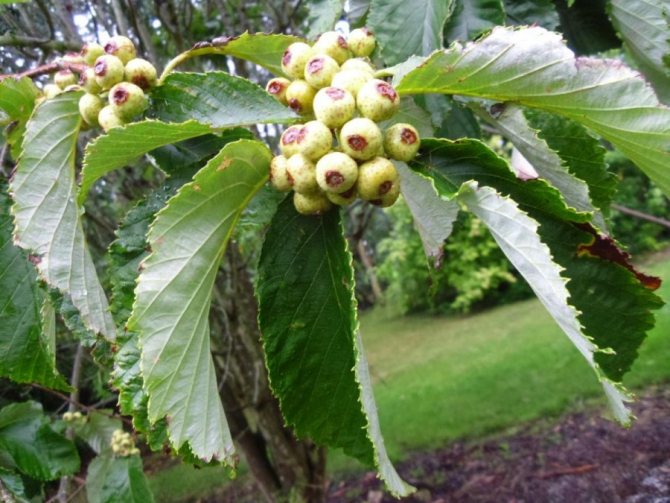

Economic value and application [edit | edit code]
Has food, melliferous, medical, decorative, phytomeliorative and other values.
Rowan fruit (Latin Fructus Sorbi) is used as a medicinal raw material, which is harvested mature in August-October before frost, dried in dryers at 60-80 ° C or in well-ventilated rooms, spreading in a thin layer on cloth or paper [2].
Because of the bitterness in fresh form, fruits are practically not eaten, more often after frost, when they lose their bitterness. They are mainly used for processing. They are excellent raw materials for liquor and vodka (bitters, including brandy and rowanberry) and confectionery industry, production of soft drinks. When canning, they are used to prepare jelly, sweets such as "mountain ash in sugar", jam, marmalade, jam, marshmallow. The fruits are dried and made into "fruit powders" and flour.
Rowan is a medium-productive spring honey plant that gives bees nectar and pollen; nectar productivity - up to 30-40 kg per hectare of plantations. Mountain ash honey is reddish and coarse-grained, with a strong aroma [3].
Rowan fruits are rich in vitamin C (up to 160 mg%) and carotene (up to 56 mg%).
Rowan is widely used in ornamental gardening and landscaping and is widely bred. Decorative throughout the year, especially during flowering and in autumn coloration. It has many garden forms, including weeping, narrow-pyramidal, yellow-fruited, with pinnately-lobed leaves, etc.
It has fractional-porous reddish wood, from which turning products, decorations, and furniture are made.
Mountain ash bark can be used as a raw material for tanning.
The fruits serve as an excellent food for birds, shoots - for livestock.Raw ripe fruits can be fed to livestock and poultry.
As a result of crossing of common mountain ash with hawthorn and medlar, with other types of mountain ash, as well as by selection from wild mountain ash, several hybrids and varieties with remarkable economic qualities were obtained. Brinell hardness index is 3 HB.
Wood [edit | edit code]
A sound rock with a wide reddish-white sapwood and a reddish-brown core, core rays barely visible on a radial section. Small vessels and well-visible annual rings.
In terms of mechanical properties, mountain ash is somewhat inferior to beech wood and is close to apple wood. Due to its properties, rowan wood has found application in artistic and decorative products. It is easy to work with, it lends itself well to coloring, and allows for fairly fine carvings. The density of mountain ash wood ranges from 550 to 740 kg. per cubic meter. At the same time, mountain ash is a fairly hard breed, the Brinell hardness indicator is 3 HB. Rowan is well colored, amenable to grinding and polishing. Polished mountain ash has a characteristic shine. In the past, it was widely used by carpenters, carriage makers, carvers. Today it is used in the production of various household utensils, dishes, tool handles [4].
For the manufacture of products, exclusively dry mountain ash is used. Drying of freshly cut mountain ash should be carried out with extreme caution, with hasty drying the wood is covered with a network of cracks [5].
Taxonomy [edit | edit code]
Many previously described mountain ash species were later combined with the species Sorbus aucuparia
, and their names have become synonymous with the species:
Synonyms [edit | edit code]
- Sorbus altaica Koehne
- Sorbus amurensis Koehne - Amur mountain ash
- Sorbus anadyrensis Kom.
- Sorbus aucuparia var. typica C.K. Schneid.
- Sorbus boissieri C.K. Schneid.
- Sorbus boissieri var. adsharica Sosn.
- Sorbus camschatcensis Kom.
- Sorbus glabrata (Wimm. & Grab.) Hedl.
- Sorbus kamtschatcensis Kom.
- Sorbus pohuashanensis (Hance) Hedl. - Rowan pohuashanskaya
- Sorbus pohuashanensis var. amurensis (Koehne) Y.L. Chhou & S.L. Tung
- Sorbus polaris Koehne
- Aucuparia sylvestris Medik.
- Mespilus aucuparia (L.) Scop.
- Pyrenia aucuparia (L.) Clairv.
- Pyrus aucuparia (L.) Gaertn.
- Pyrus aucuparia var. typica (C.K. Schneid.) Asch. & Graebn.
- Pyrus rossica A.D.Danilov
Infravids [edit | edit code]
Other species began to be considered as subspecies or forms of common mountain ash: There are several subspecies and forms:
- Sorbus aucuparia subsp. maderensis (Lowe) McAll.
- Sorbus aucuparia subsp. pohuashanensis (Hance) McAll.
- Sorbus aucuparia subsp. praemorsa (Guss.) Nyman
- Sorbus aucuparia subsp. sibirica (Hedl.) Krylov [syn. Sorbus sibirica Hedl. - Siberian mountain ash]
- Sorbus aucuparia f. xanthocarpa (Hartwig [es] & Rümpler) Rehder
The status of some varieties remains uncertain:
- Sorbus aucuparia var. fastigiata (Loudon) Hartwig & Rümpler
- Sorbus aucuparia var. xanthocarpa hort. ex Hartwig & Rümpler
Botanical description
Rowan is common throughout Europe, South-West Asia, the Caucasus. In the north, the area is limited by the tundra.
In the mountains, it grows up to the upper tiers of vegetation. The higher the plant rises, the lower and more multi-stemmed it is.
On the plains, mountain ash looks like a standard deciduous tree up to 12 m high. In household plots, the culture does not grow higher than 5 m. Beyond the Urals, a subspecies of Siberian mountain ash grows.
The plant has an elliptical openwork crown that envelops one or more stems. Looking at it, you will not immediately understand whether the mountain ash is a tree or a shrub. The height and width of the plant varies greatly and depends on the climate, agricultural technology, and the method of formation. By regularly pruning branches, you can create a beautiful specimen of any habit.
Life forms:
| Wood | Bush |
| Ordinary | Hosta |
| Intermediate | Elderberry |
| Large-leaved | Kene |
Rowan bark is smooth and shiny. Young twigs are covered with pubescence. Leaves are multi-part, delicate, long. Each consists of an odd number of oblong, serrated plates. The color is bright green above, pale below. The mountain ash turns red or gold in the fall, depending on the species.
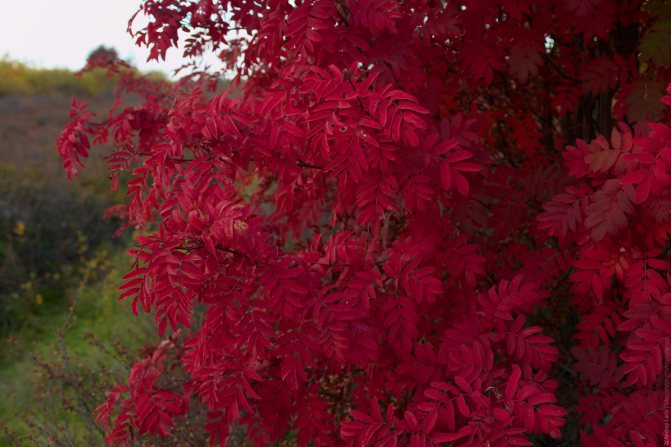

Photo: Red rowan in autumn
Corollas are grouped into a scutellum inflorescence about 10 cm wide. Scutes are formed on short shoots. The corolla, like all Rosaceae, consists of 5 petals. The petals are snow-white, the corolla width is up to 1.3 cm. In the center there are many stamens and one pistil.
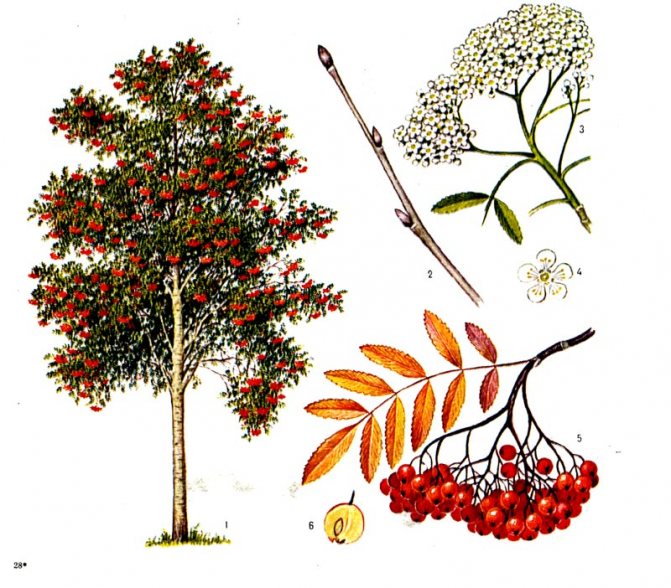

Photo: Rowan ordinary: 1 - common shoot, 2 - shoot with buds, 3 - branch with leaves and inflorescences, 4 - flower, 5 - branch with leaves and fruits, 6 - fruit in section
Flowering continues in May and June. Flowering plants emit a foul-smelling trimethylamine gas that spreads up to several meters.
By the middle of summer, fruits are tied, which botanists call apples. The diameter of each is up to 1 cm, the color is orange. Inside there are small, rounded seeds.
In the middle lane, the crop ripens in early September. Rowan fruits hang on the tree until winter.
Not everyone knows how rowan differs from viburnum. These are completely different plants, although they produce berries that are similar in shape, color and taste.
Differences:
| Characteristics | Viburnum | Rowan |
| Family | Adox | Rosaceae |
| Life form | Wood | Shrub or tree |
| Fetus | Drupe | Apple |
| The number of seeds in the fruit | One | Lot |
| Berry consistency | Watery | Dense |
| Sheet | Plain | Complicated |
Main varieties
The description indicates that there are three main types of mountain ash, which include many subspecies: Forest, Garden, Decorative. Forest mountain ash has healthy, but very bitter berries. The common mountain ash, the species of which belongs to the forest, is unpopular because of its bitterness.
High-quality mountain ash is grown by people, but is not inferior in usefulness to wild ones. The berries of the varietal tree have a more pleasant sweet taste. Breeders have bred white, yellow and orange mountain ash to decorate the garden or vegetable garden. The most popular varieties: Nevezhinskaya, Alaya large, Burka, Titan, Finnish.
The rowan shrub is very popular as a garden, vegetable garden or home plant. Varieties of the bush are also artificially bred, but this does not prevent the plant from bearing fruit.
Rowan varieties for the Siberian region.
The best varieties for the harsh Siberian climatic conditions: Moravskaya, Businka, Burka, Nevezhinskaya, Dessertnaya, Scarlet Large, Granatnaya, Titan, Sorbinka.
Best of all, adaptation to the winter season is at the mountain ash "Nevezhinskaya", the rest of the varieties require optimal conditions for a favorable living. In order to avoid the death of plants in the winter season, professionals advise to plant sweet-fruited varieties on the crown of the mountain ash "Nevezhinskaya".
Flowers of the "Nevezhinskaya" variety have good tolerance for lowering temperature conditions down to -3 degrees. But this variety can react badly to the shadow. Summer residents assure that after a cold snap, the taste of berries improves, becomes brighter.
It is recommended to buy seedlings from the nursery. Seedlings should not be mechanically damaged, because in the future this will lead to poor development of trees, and maybe even to their death.

